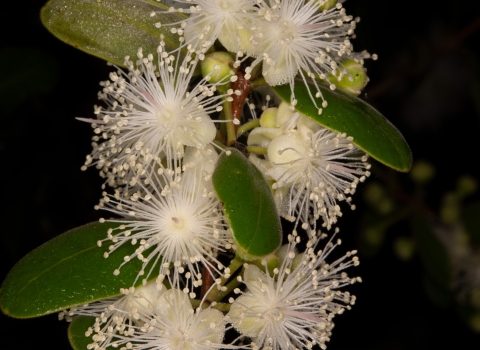Tobusch fishhook cactus, a small two-inch cactus armed with curved “fishhook” spines, is a rare plant known only from the Edwards Plateau of Texas. In 1979, only about 200 plants were known in four locations. Today, more than 4,000 Tobusch fishhook cacti are known to exist in eight central Texas counties, thanks to the hard work of many partners, including the Texas Parks and Wildlife Department (TPWD), the Texas Department of Transportation (TxDOT), the Lady Bird Johnson Wildflower Center, The Nature Conservancy (TNC), and central Texas landowners. As a result, the Service is proposing to downlist the cactus under the Endangered Species Act (ESA) from endangered to threatened.
“Working with our partners, we have demonstrated that the ESA can and does work to recover species like the Tobusch fishhook cactus,” said Benjamin Tuggle, the Service’s Southwest Regional Director. “We remain focused on working with our partners to improve the status of this unique cactus with the ultimate goal of one day delisting the species.”
The Tobusch fishhook cactus was federally listed as endangered in November 1979. Following the listing of the cactus under the ESA, existing populations were protected and extensive research was conducted to better determine its range and population size. The Texas Parks and Wildlife Department has protected eight populations of the cacti on state lands. The Nature Conservancy manages two preserves for the cacti, and the Texas Land Conservancy manages an additional preserve. The Texas Department of Transportation is monitoring populations on several highway rights-of-way, and through the Service’s Partners for Fish and Wildlife Program, private landowners are helping to conserve the species.
Additionally, the Lady Bird Johnson Wildflower Center administers a grant program to support research and conservation of this rare cactus and this effort has led to better science. The Wildflower Center also maintains a nursery of Tobusch fishhook cactus plants that were salvaged from development sites and will be used to restore wild populations in protected sites.
The Tobusch fishhook cactus is now confirmed in eight central Texas counties: Bandera, Edwards, Kerr, Kimble, Kinney, Real, Uvalde, and Val Verde. We estimate that about five million acres of potential habitats occur in these and several adjacent counties, and that the total population could be as high as 500,000 plants.
While many additional populations have been identified, the species still faces a number of threats, including: changes in the wildfire cycle and juniper encroachment, parasite infestation, illicit collection, and the consequences of small population sizes. Additionally, it is unclear what impact the subdivision of large livestock ranches into many small properties for residential and recreational uses will have on the species.
A 60-day public comment period will begin upon publication of the proposal in the Federal Register. The Service will accept comments received or postmarked by or before February 27, 2017. For more information on the proposal, what to comment on, or how to submit comments, see the Federal Register notice on our web site at http://www.fws.gov/southwest/es/AustinTexas.
Native plants are important for their ecological, economic, and aesthetic values. Plants play an important role in development of crops that resist disease, insects, and drought. At least 25 percent of prescription drugs contain ingredients derived from plant compounds, including medicine to treat cancer, heart disease, juvenile leukemia, and malaria, and to assist in organ transplants. Plants are also used to develop natural pesticides.
America’s fish, wildlife and plant resources belong to all of us, and ensuring the health of imperiled species is a shared responsibility. The Service is actively engaged with conservation partners and the public in the search for improved and innovative ways to conserve and recover imperiled species. To learn more about the Endangered Species program, go to http://www.fws.gov/endangered/.

